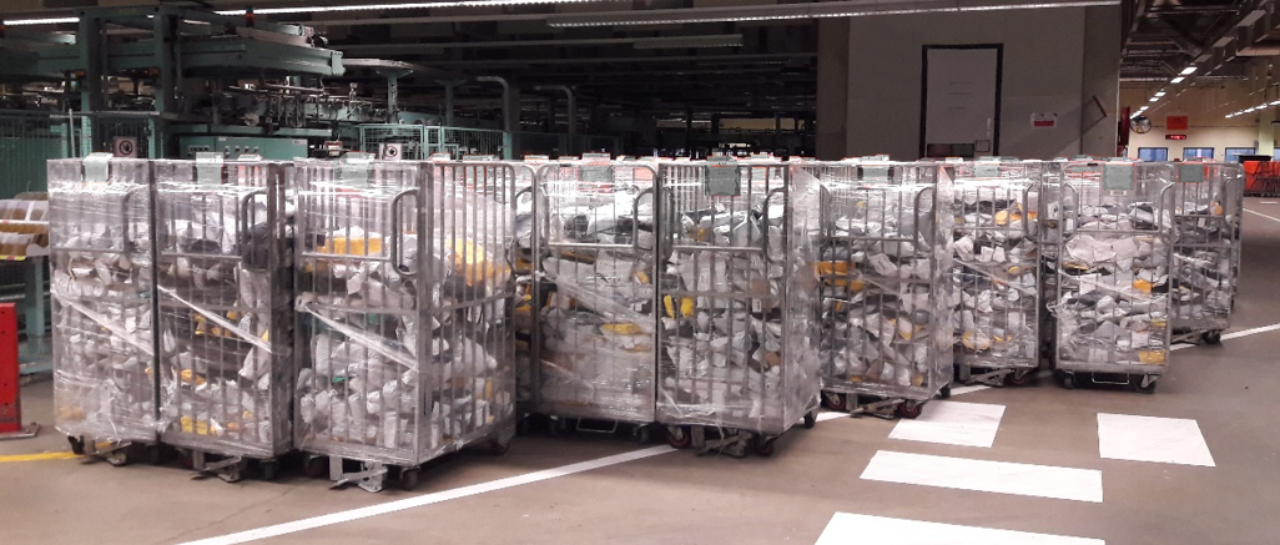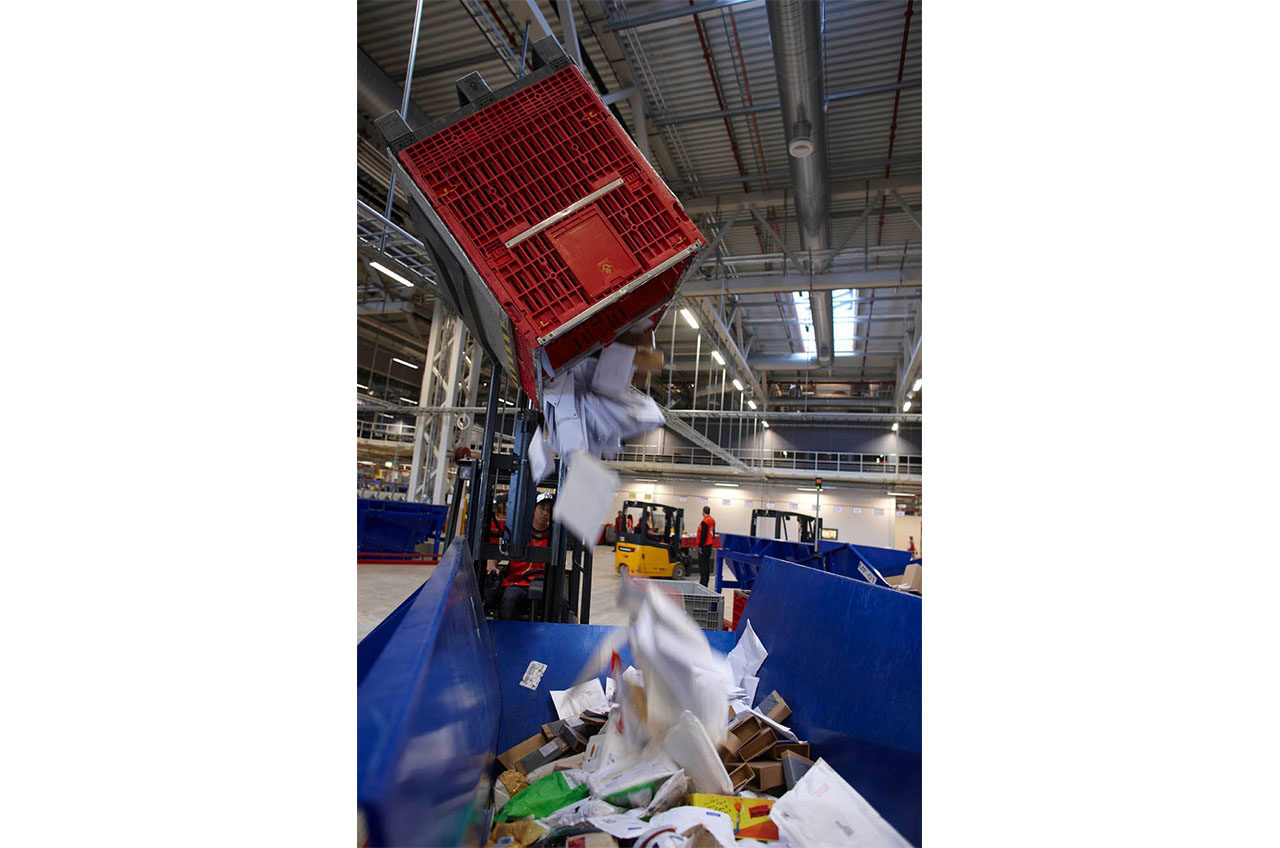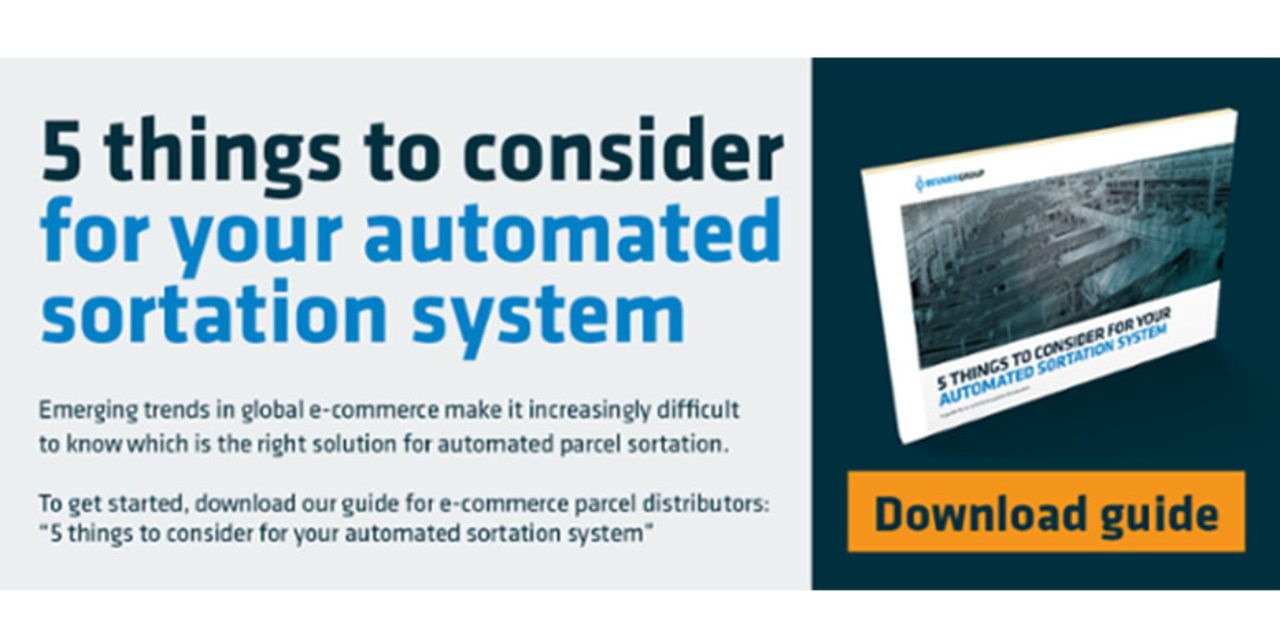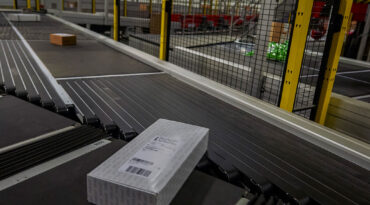Rest mail strains distributors’ capacity
The accumulating amount of rest mail often have distributors working at capacity limits. Both in terms of physical space at centres, the number of operators manning sortation systems and the amount of hours delivery trucks spend on the road.
Tiny parcels are at the risk of, quite literally, falling between system transfers while conveyed through the automated system. In worst cases, tiny parcels might end up with the wrong delivery because the automated system was not designed to process an item of that size. As such, whenever an item deviates from predefined standards, it often needs manual sorting and slows down distribution.
To learn more about how problematic shipments can disrupt operations at a distribution centre, we recommend you read our article on “How to deal with no-read parcels”.
Typically, automated sortation systems are designed to operate within certain size restrictions optimised for handling regular, relatively large parcels – up to 120 x 80 x 80 cm. A coffee table, for example. The smallest machinable parcel on such a system would typically be book-size, not smaller than 20 x 15 x 1 cm.
When shipments below this size limit begin to make up a larger proportion of all items handled at a distribution centre, that’s when challenges begin.
Solutions for handling rest mail
To manage the immediate issue of accumulating rest mail, distributors have three options. They can:
- Rely on manual labour, that is, additional manning
- Redesign or reconfigure their existing sortation system
- Build a separate, dedicated sortation system
Handling rest mail without automated sortation
Without a sortation system for handling rest mail, these items will have to be picked up physically and moved to the respective gate for delivery. Obviously this is inefficient compared to automated sortation and the additional manning is expensive.
Handling rest mail with automated sortation
While it’s possible to redesign an existing sortation system to be able to handle rest mail, it’s usually rather costly, and often, there’s a better business case for designing a separate system.
A dedicated rest mail sortation system will typically be designed to handle items up to approximately A3 size. There are a few things of such a system that are worth highlighting:
- They are often made room for by adding an extra floor, or mezzanine, above the operational production floor. This is to ensure a smooth door-to-door process at the distribution centre.
- As part of the automated handling, systems come with OCR and video coding technology enabling barcode scanning on labels wrapped around tiny parcels. This reduces the manual workload of reading inadequate barcodes. Read more about video technology for scanning barcodes.
- Automated sortation comes with ‘legal for trade’ software which can accurately weigh and measure even tiny parcels and automatically manage and store that data for correct invoicing, etc.
- With dedicated sortation, rest mail items are only separated from regular parcels during the actual sortation. They meet again when making their way to the delivery route.
With a dedicated rest mail system, distribution centres can achieve a very high degree of automation. If 80 percent of your shipments are rest mail, which used to be handled manually, these can now be automatically sorted, with the remaining 20 percent being sorted on your established system.








